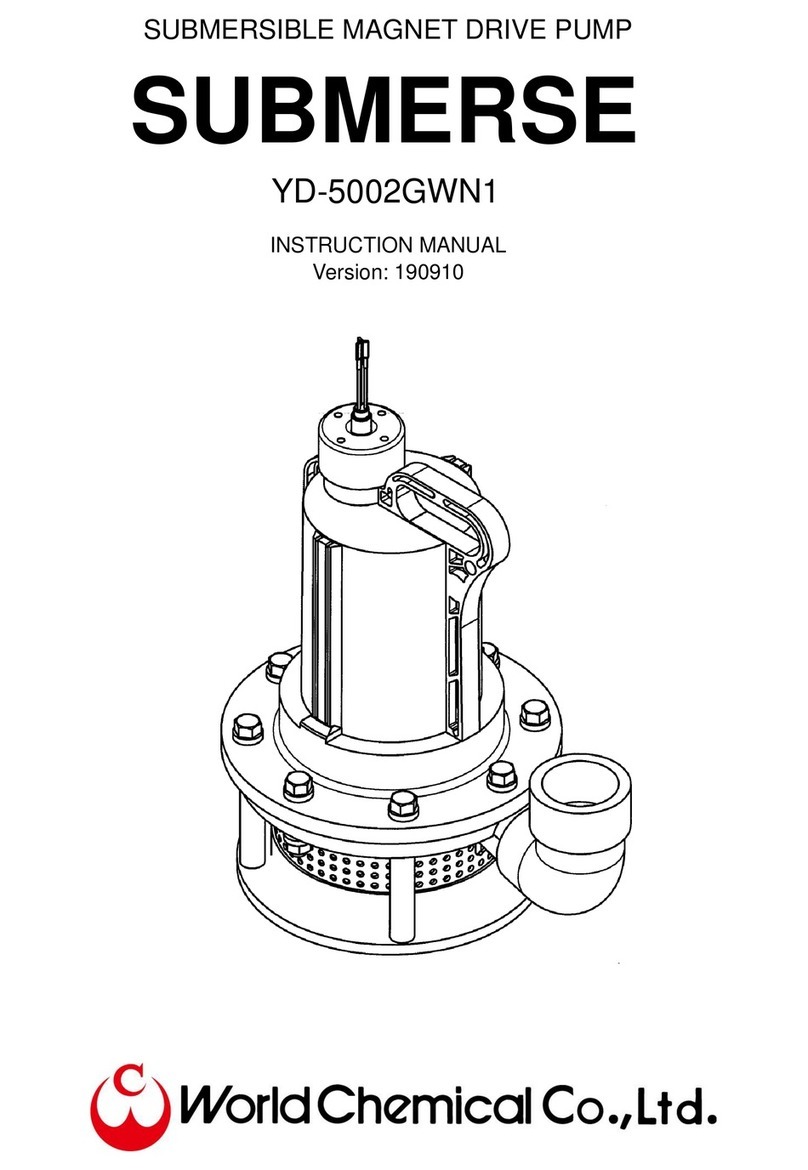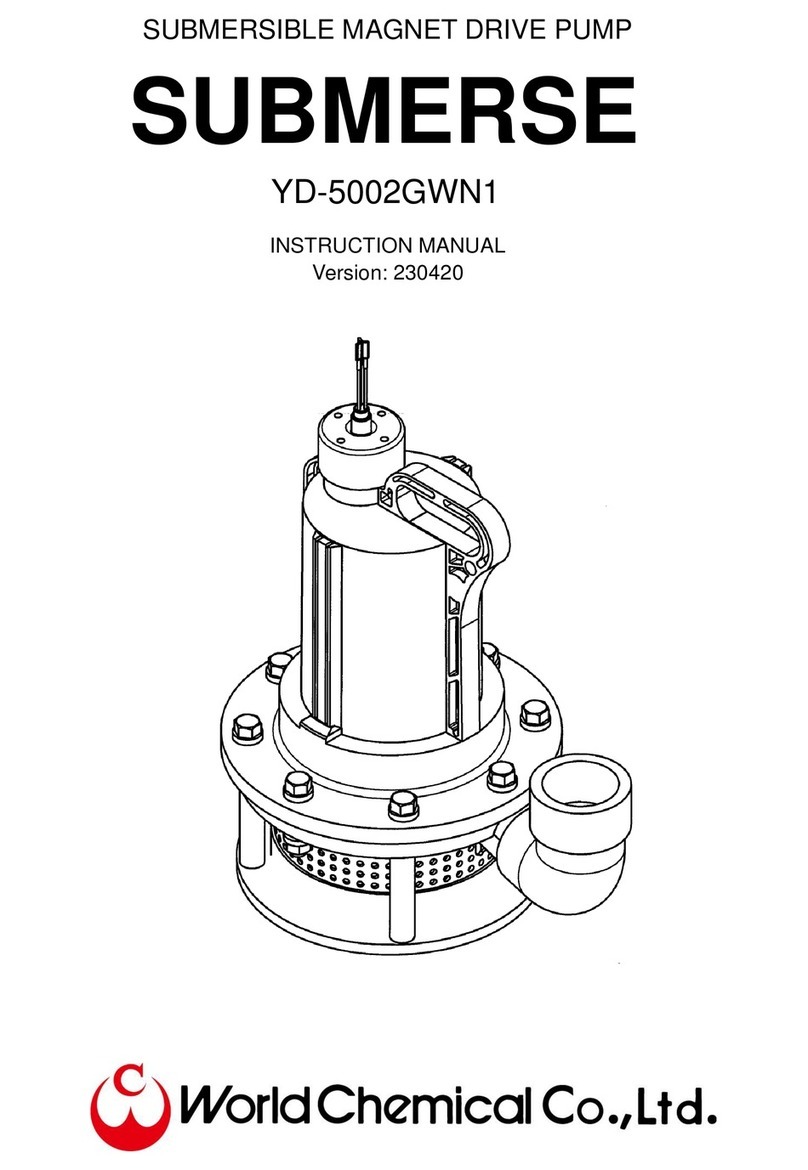
2
FEATURES
Valveless
This patented VALVELESS feature has been a World Chemical trademark since
1971. Because of this unique priming mechanism, this pump does not require any
foot valves. Also, the built-in check valve reduces backflow velocity to retain
maximum liquid in the priming chamber at pump shutdown.
(continued)
Uniquely resistant to high temperatures
Our originally engineered design has the unique capability of constantly and smoothly
self-priming and suctioning even in temperatures as high as 184 °F (70 °C ).
Resistant to wide range of chemicals
Parts such as the pump base and the motor bracket that come in contact with
chemical solvents are constructed with a high resistant resin. Thus the pump will not
erode from chemicals or atmospheric gases, and can also be used with hard-to
handle chemicals such as sulfuric acids, nitric acids, caustic sodas, hydrofluoric acids
and electro-less nickel plating solutions.
THE PRINCIPLE OF SELF-PRIMING
The NSF/SF series is a uniquely developed sealless and valveless self-priming
centrifugal chemical pump. The primed water that fills the whole interior of the pump
moves to the self-priming chamber guided by the impeller after the pump is turned on.
In the self-priming chamber, the air and water separate as they rotate. The water is
propelled into the impeller as it leaves the self-priming rotational outlet located on the
bottom of the pump, and continues its repetitive cycle of self-priming. Air from the
shaft is sealed by the seal blades during self-priming. As an added measure, a
balance hole is constructed on the casing to release air into the self-priming chamber,
ensuring that the self-priming operation is not affected. While the pump is not in use,
the siphon cut hole located on the interior of the self-priming chamber and the suction
chamber blocks the backflow from the siphoning action. Water that is necessary for
the subsequent prime remains in the suction chamber for smooth pumping
Pump is filled with
water.
Just as the pump is turned on,
the liquid in the suction
chamber is sucked up, as the
rotational movement creates
a stronger vacuum seal.
All of the air in the main body of
the pump is discharged and will
allow normal smooth operation.
Should even a little amount of air
enter, it will be discharged
without causing any operational
difficulty.
When the pump is stopped, the
siphon cut hole will minimize
the liquid backflow and secure
enough liquid in the suction
chamber for the next prime.
































